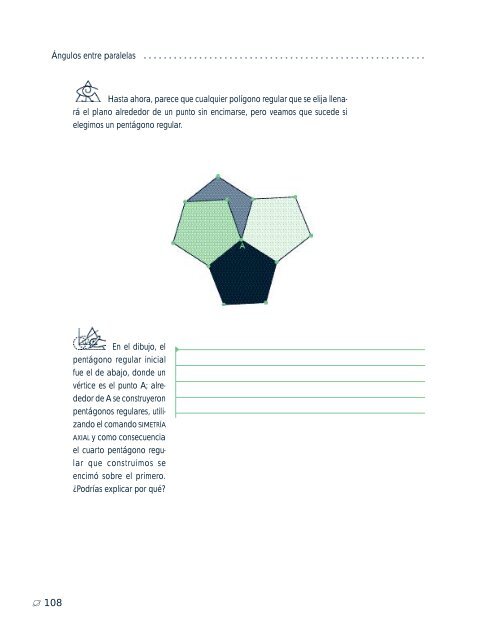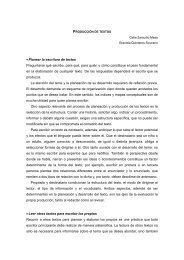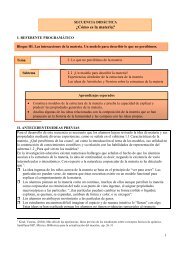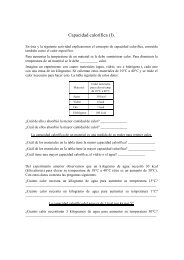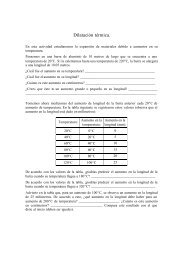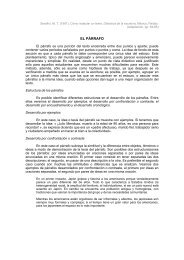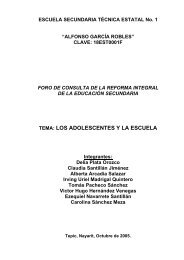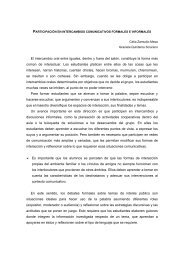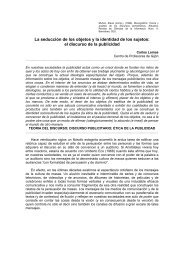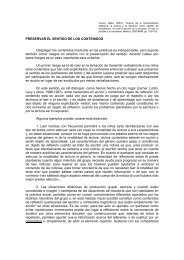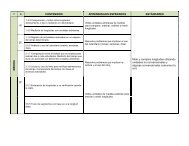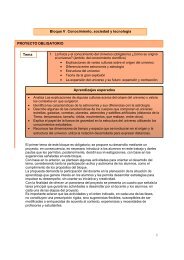Geometría dinámica - Reforma de la Educación Secundaria ...
Geometría dinámica - Reforma de la Educación Secundaria ...
Geometría dinámica - Reforma de la Educación Secundaria ...
You also want an ePaper? Increase the reach of your titles
YUMPU automatically turns print PDFs into web optimized ePapers that Google loves.
Ángulos entre parale<strong>la</strong>s • • • • • • • • • • • • • • • • • • • • • • • • • • • • • • • • • • • • • • • • • • • • • • • • • • • • • • • •<br />
108<br />
Hasta ahora, parece que cualquier polígono regu<strong>la</strong>r que se elija llena-<br />
rá el p<strong>la</strong>no alre<strong>de</strong>dor <strong>de</strong> un punto sin encimarse, pero veamos que suce<strong>de</strong> si<br />
elegimos un pentágono regu<strong>la</strong>r.<br />
En el dibujo, el<br />
pentágono regu<strong>la</strong>r inicial<br />
fue el <strong>de</strong> abajo, don<strong>de</strong> un<br />
vértice es el punto A; alre-<br />
<strong>de</strong>dor <strong>de</strong> A se construyeron<br />
pentágonos regu<strong>la</strong>res, utili-<br />
zando el comando SIMETRÍA<br />
AXIAL y como consecuencia<br />
el cuarto pentágono regu-<br />
<strong>la</strong>r que construimos se<br />
encimó sobre el primero.<br />
¿Podrías explicar por qué?


